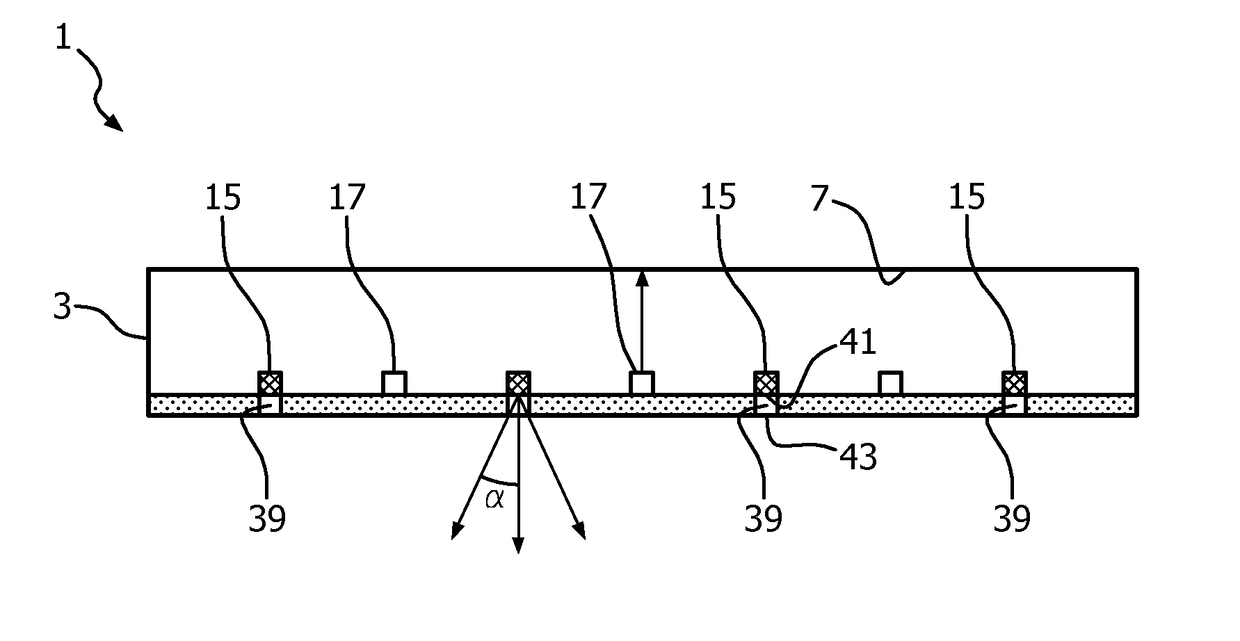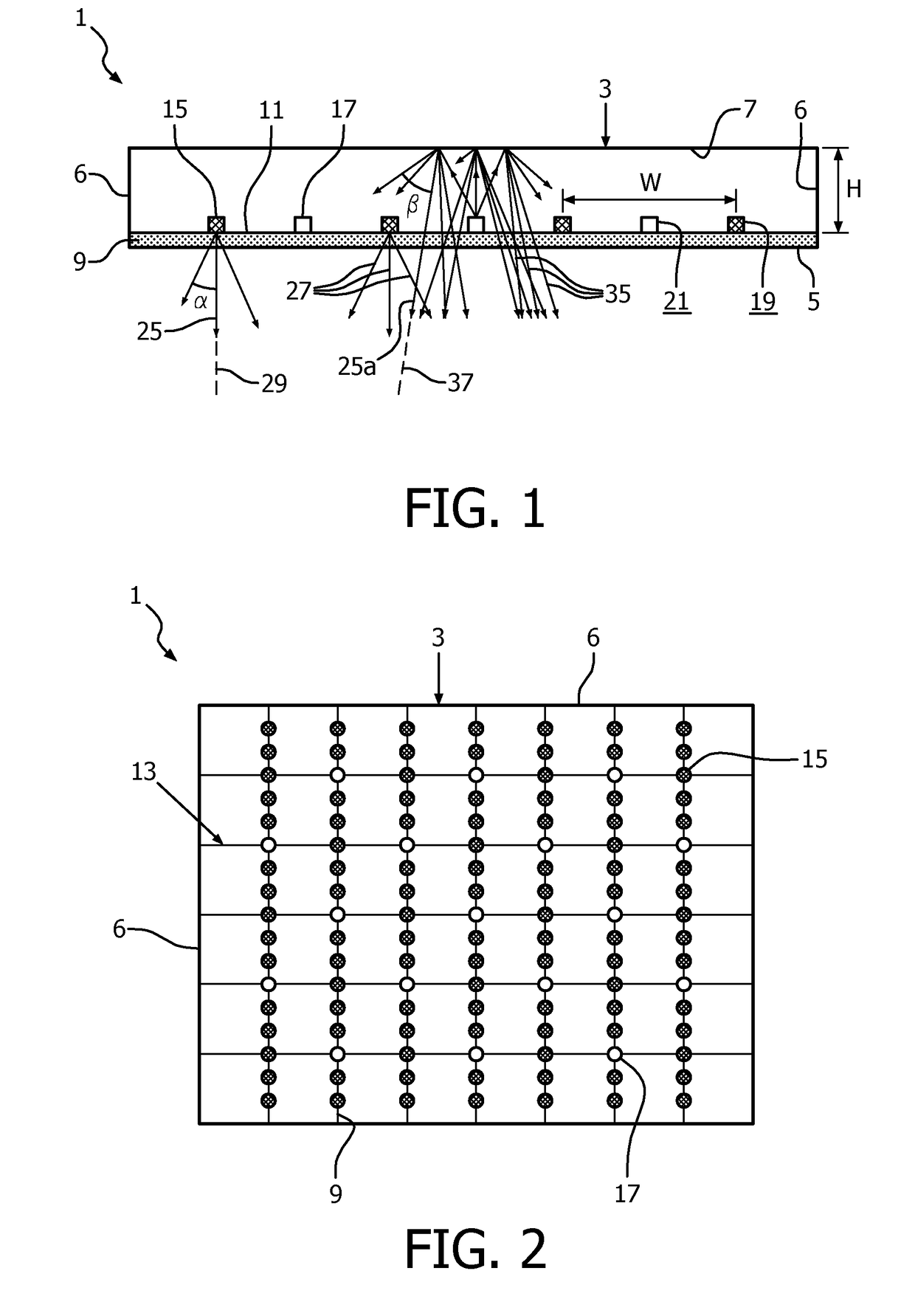Lighting device and lighting system
a lighting device and lighting technology, applied in lighting and heating apparatus, light source combinations, instruments, etc., can solve the problems of difficult to achieve acceptable lighting device settings to issue shaped light enabling the rendering of a natural appearance of an illuminated object to be optimized, and the realization of the shape of light source light is relatively complex and cumbersom
- Summary
- Abstract
- Description
- Claims
- Application Information
AI Technical Summary
Benefits of technology
Problems solved by technology
Method used
Image
Examples
first embodiment
[0029]FIG. 1 shows a cross-sectional view of the lighting device 1 according to the invention. The lighting device comprises a housing 3 of height H, which housing comprises a light emission window 5 and, opposite thereto, a semi-specular reflective wall as a reflector 7, connected to each other by side walls 6. A planar carrier 9, in the figure a light transmissive, light diffusing plate, which is arranged in between the light emission window and the reflector, has, on a side 11 facing the reflector, a grid 13 (see FIG. 2) of alternating first 15 and second light sources 17 forming a first group 19 and a second group of light sources 21, respectively. The first light sources have a relatively small optical distance to the plate 9, whereas the second light sources, whose light is reflected by a white scattering layer with reflection coefficient of 0.9-1.0 have a relatively large optical distance to said plate. The diffuser is used to make discrete light sources and the grid less vis...
second embodiment
[0030]FIG. 2 shows a bottom view of the lighting device 1 according to the invention. The carrier 9 is an open frame provided with a grid 13 of first 15 and second 17 light sources, the carrier is fixed to walls 6 of the housing 3. The light sources are dimmable, color tunable LEDs in the figure, but the light sources alternatively could be dimmable miniature halogen lamps. The first light sources are arranged in lines (parallel or randomly oriented), such that the LEDs within a line are much closer, at least 3 times closer, than those between the lines. The first and second light sources are provided in a ratio of 3:1, causing R1 to be about 3, i.e. to be in the favorable range of 21<=4. The alternating arrangement of the first and second light sources is adapted to said ratio.
third embodiment
[0031]FIG. 3 shows a cross-sectional view of the lighting device 1 according to the invention, in which the first 15 and second light sources 17 are alternately arranged, similar to the embodiment shown in FIG. 1. In the embodiment of FIG. 3, the light-diffusing carrier plate 9, for example made of translucent PMMA, is provided with openings 39 for collimator light, with the first light sources 15 being located at a respective first end 41 facing the reflector 7 of a respective opening. The quality of the accent lighting is improved thereby, as the light beams of the first light sources issued at a respective second end 43 of the opening are more collimated and less diffused, i.e. beam angle α is relatively very small, for example 12° or less. Furthermore, less light from the first light sources is scattered back into the housing 3, so that the efficiency of the lighting device is increased.
PUM
 Login to View More
Login to View More Abstract
Description
Claims
Application Information
 Login to View More
Login to View More - R&D
- Intellectual Property
- Life Sciences
- Materials
- Tech Scout
- Unparalleled Data Quality
- Higher Quality Content
- 60% Fewer Hallucinations
Browse by: Latest US Patents, China's latest patents, Technical Efficacy Thesaurus, Application Domain, Technology Topic, Popular Technical Reports.
© 2025 PatSnap. All rights reserved.Legal|Privacy policy|Modern Slavery Act Transparency Statement|Sitemap|About US| Contact US: help@patsnap.com



